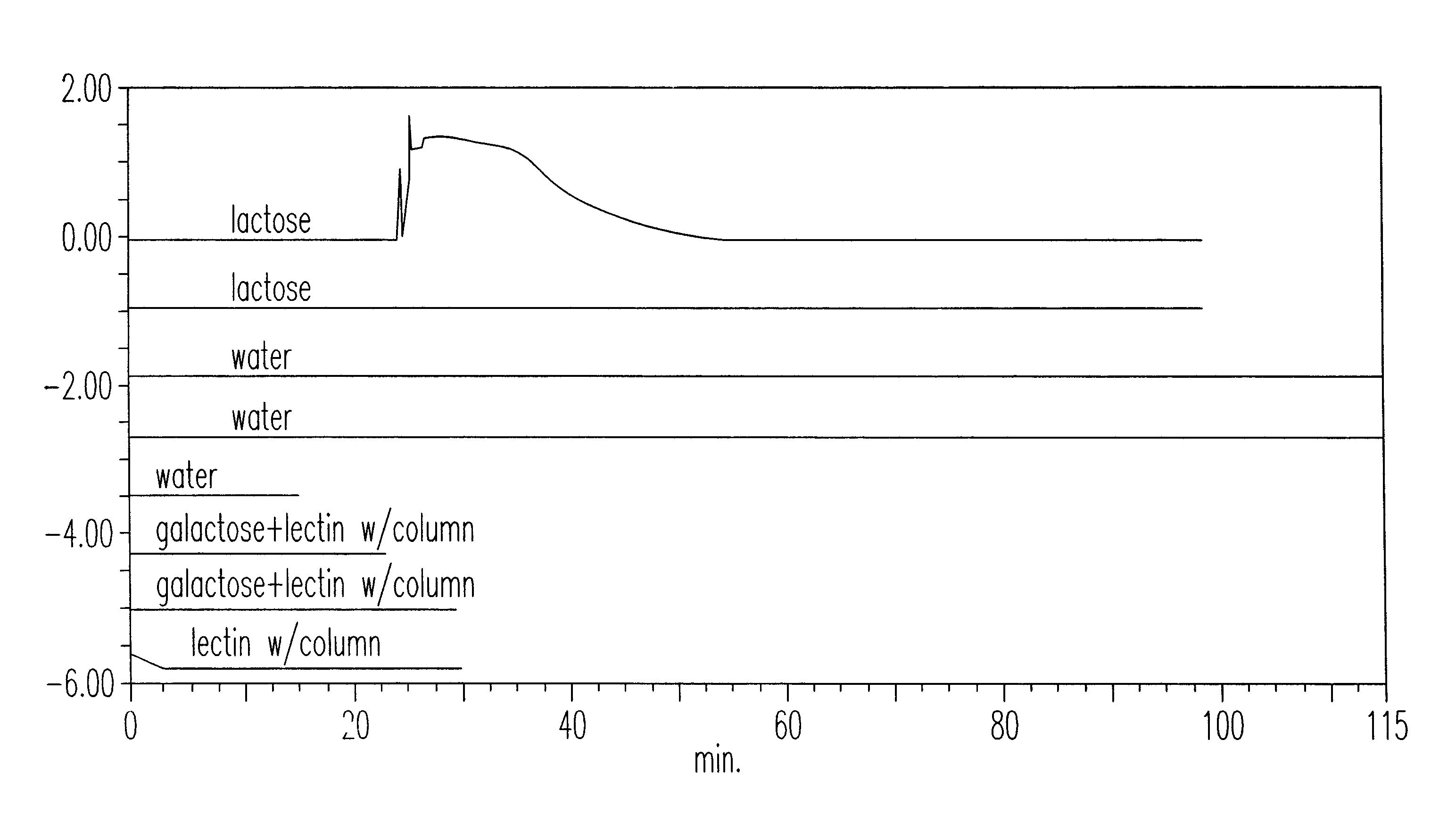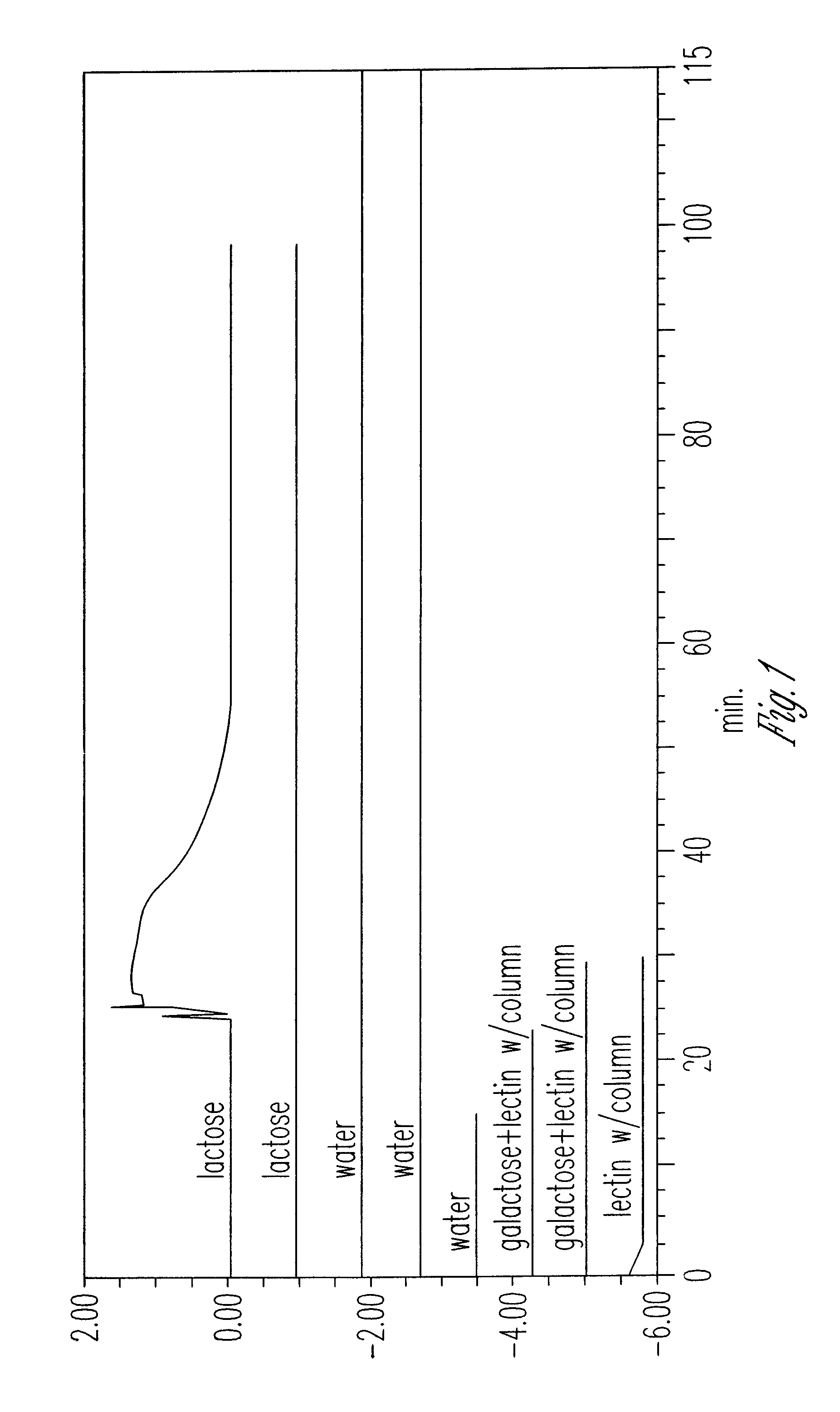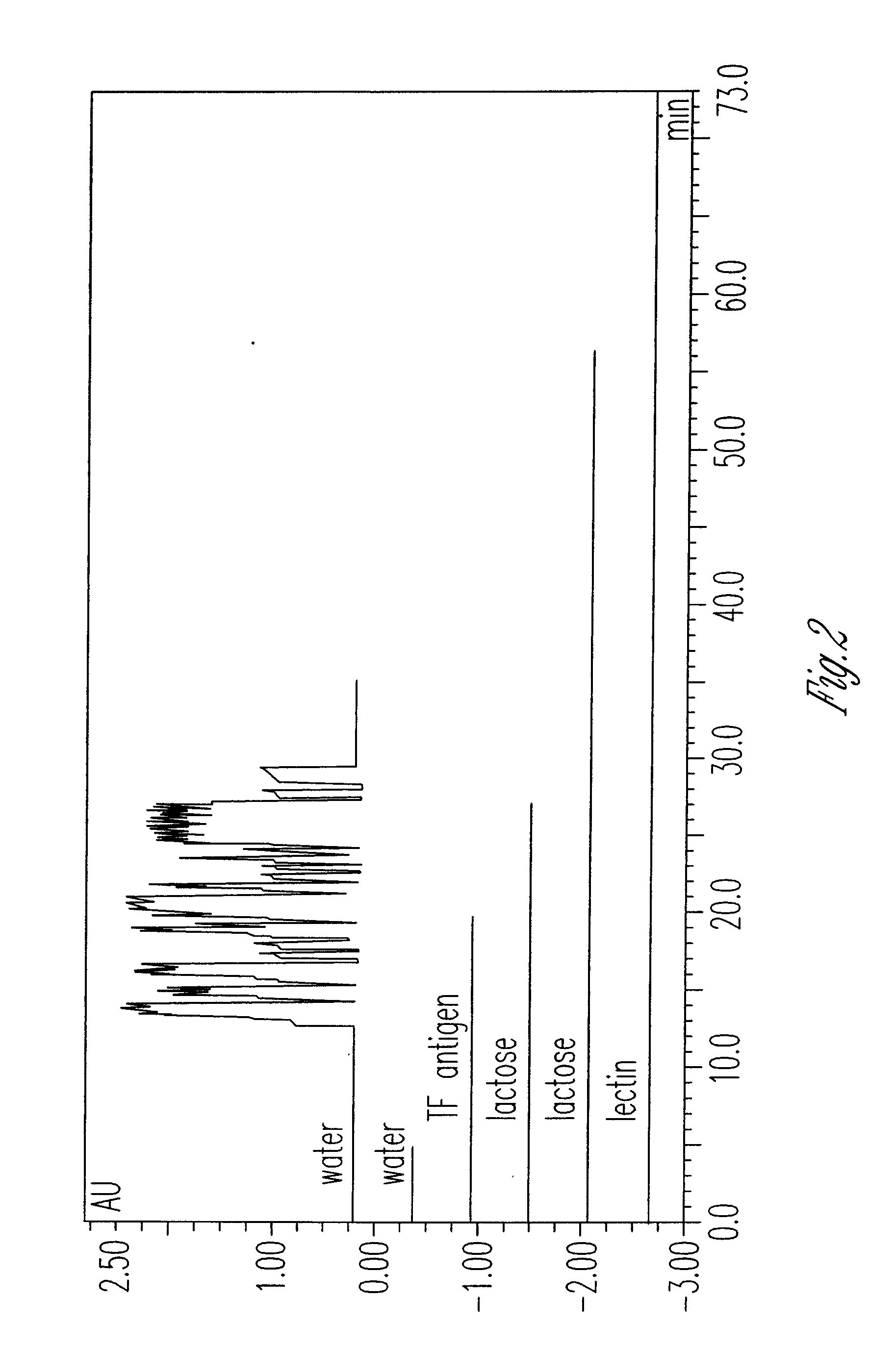Affinity/lectin chromatography methods
a technology of affinity and lectin, applied in the field ofaffinity/lectin chromatography methods, can solve the problems of few commercially available methods, no simple methods for preparing lectin columns, and no simple methods for carbohydrate preparation
- Summary
- Abstract
- Description
- Claims
- Application Information
AI Technical Summary
Benefits of technology
Problems solved by technology
Method used
Image
Examples
example 1
[0011]The primary amino column was washed with pH 6.0 acetate buffer until 10 column volumes had been washed over it. Lactose (1 mg / ml in pH 6.0 acetate buffer) was injected onto the column with an autosampler, 0.05 ml injected. An attempt to wash it off was done. To demonstrate lactose binding, lectin specific for β-D-galactosides was used. The column was washed with pH 6.0 acetate buffer. Viscum album lectin, 0.5 mg / ml, is injected onto the affinity column. The column was washed with pH 6.0 acetate buffer and no protein was removed. An attempt to specifically wash it off was done by eluting with lactose. This was accomplished. See FIG. 1 for illustration of these experiments. The effluent from the column was monitored by UV absorbance at 280 run for protein detection.
Example 2
[0012]The primary amino column was washed with pH 6.0 acetate buffer until 10 column volumes had been washed over it. Galactose-1,3-β-D-GalNAc, TF antigen (1 mg / ml in pH 6.0 acetate buffer), was injected onto...
example 3
[0013]The hydrolysis of Gal-1,3-β-GalNAc from the resin with water is demonstrated in FIG. 3 noted above. This is an HPAEC trace of this compound before treatment with primary amino column, after treatment with column and then after water addition to column. It should be noted that all detectable Gal-1,3-β-GalNAc was bound to the column and then removed with water as explained by FIG. 4, the anchimeric assisted hydrolysis of HexNAc sugars bound to an amino column.
[0014]Thus, Methods for making designed carbohydrate affinity columns and lectin columns are provided. Reducing sugar of choice is dissolved in pH 6.01 acetate buffer and injected onto a primary amino group functionality column. The column is washed with pH 6.01 acetate buffer and the column effluent monitored with a variable wavelength UV detector for protein. Lectin columns are made by injecting appropriate lectin to the designed carbohydrate and the lectin binds to this scaffold. The lectin column is formed, FIG. 5.
[0015...
PUM
| Property | Measurement | Unit |
|---|---|---|
| pH | aaaaa | aaaaa |
| pH | aaaaa | aaaaa |
| pH | aaaaa | aaaaa |
Abstract
Description
Claims
Application Information
 Login to View More
Login to View More - R&D
- Intellectual Property
- Life Sciences
- Materials
- Tech Scout
- Unparalleled Data Quality
- Higher Quality Content
- 60% Fewer Hallucinations
Browse by: Latest US Patents, China's latest patents, Technical Efficacy Thesaurus, Application Domain, Technology Topic, Popular Technical Reports.
© 2025 PatSnap. All rights reserved.Legal|Privacy policy|Modern Slavery Act Transparency Statement|Sitemap|About US| Contact US: help@patsnap.com



